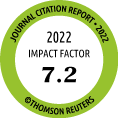Return to content in this issue
Sputum Inflammatory Patterns Are Associated With Distinct Clinical Characteristics in Patients with Occupational Asthma Independently of the Causal Agent
Migueres N1,2,*, Vandenplas O3,*, Walusiak-Skorupa J4, Wiszniewska M4, Munoz X5, Romero-Mesones C5, Suojalehto H6, Lindström I6, van Kampen V7, Merget R7, Mason P8, Maestrelli P8, Sastre J9, Quirce S10, Rifflart C3, Godet J2,11, de Blay F1, on behalf of the European network for the PHenotyping of OCcupational ASthma (E-PHOCAS)**
1Division of Pulmonology, Department of Chest Diseases, University Hospital of Strasbourg, Strasbourg University, Strasbourg, France
2UMR 7357 Laboratoire des sciences de l'ingénieur, de l'informatique et de l'imagerie ICUBE, Strasbourg, France
3Service de Pneumologie, Centre Hospitalier Universitaire UCL Namur, Université Catholique de Louvain, Yvoir, Belgium
4Department of Occupational Diseases and Environmental Health, Nofer Institute of Occupational Medicine, Lodz, Poland
5Servei Pneumologia, Hospital Vall d’Hebron, Universitat Autònoma de Barcelona, Barcelona, Spain
6Occcupational Health, Finnish Institute of Occupational Health, Helsinki, Finland
7Institute for Prevention and Occupational Medicine of the German Social Accident Insurance (IPA), Ruhr University, Bochum, Germany
8Department of Cardiac-Thoracic-Vascular Sciences and Public Health, University of Padova, Padova, Italy
9Department of Allergy, Fundación Jiménez Díaz, Universidad Autónoma de Madrid, Madrid, Spain
10Department of Allergy, La Paz University Hospital, Madrid, Spain
11Groupe Méthode Recherche Clinique, Pôle de Santé Publique, Strasbourg University, Strasbourg, France
*These authors contributed equally.
**The E-PHOCAS investigators are listed in the online supplement.
J Investig Allergol Clin Immunol 2024; Vol 34(2)
: 85-96
doi: 10.18176/jiaci.0868
Background: Clinical heterogeneity in sensitizer-induced occupational asthma (OA) and its relationship to airway inflammatory profiles remain poorly elucidated.
Objectives: To further characterize interactions between induced sputum inflammatory patterns, asthma-related outcomes, and the high- or low-molecular-weight category of causal agents in a large cohort of patients with OA.
Methods: We conducted a multicenter, retrospective, cross-sectional study of 296 patients with OA confirmed by a positive specific inhalation challenge who completed induced sputum assessment before and 24 hours after challenge exposure.
Results: Multivariate logistic regression analysis revealed that sputum eosinophilia ≥3% was significantly associated with a high dose of inhaled corticosteroid (OR [95%CI], 1.31 [1.11-1.55] for each 250-μg increment in daily dose), short-acting ß2-agonist use less than once a day (3.54 [1.82-7.00]), and the level of baseline nonspecific bronchial hyperresponsiveness (mild, 2.48 [1.21-5.08]; moderate/severe, 3.40 [1.44-8.29]). Sputum neutrophilia ≥76% was associated with age (1.06 [1.01-1.11]), male sex (3.34 [1.29-9.99]), absence of corticosteroid use (5.47 [2.09-15.16]), use of short-acting ß2-agonists once or more a day (4.09 [1.71-10.01]), ≥2 severe exacerbations during the previous 12 months at work (4.22 [1.14-14.99]), and isolated early reactions during the specific inhalation challenge (4.45 [1.85-11.59]).
Conclusion: The findings indicate that sputum inflammatory patterns in patients with OA are associated with distinct phenotypic characteristics and further highlight the differential effects of neutrophils and eosinophils on asthma-related outcomes. These associations between inflammatory patterns and clinical characteristics share broad similarities with findings reported in nonoccupational asthma and are not related to the type of causal agent.
Key words: Eosinophils, Induced sputum, Neutrophils, Occupational asthma, Phenotype
| Title | Type | Size | |
|---|---|---|---|
 |
doi10.18176_jiaci.0868_supplemental-materials_1.pdf | 254.61 Kb |



